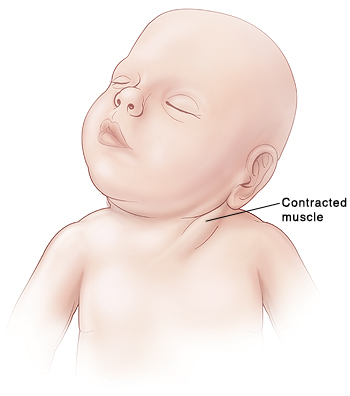Torticollis is a muscular condition in babies in which the sternocleidomastoid muscle is tight on one side of the neck. As a result, the babies’ head will be tilted towards and rotated away from the tight side. Torticollis can be present at birth (congenital) or occur later in infancy (acquired).
There are 3 subcategories of torticollis based on severity.
- The first is postural torticollis. This is when the infant presents with a head tilt, however, there is no limitation in range of motion.
- The second is muscular torticollis where there is tightness of the sternocleidomastoid muscle with a range of motion limitations.
- The third is nodular or mass group torticollis. This is when there is tightening of the sternocleidomastoid muscle with a palpable bump.
What causes torticollis?
First and foremost, you are not the cause of your child’s torticollis.
Torticollis can be caused by position in utero, multiple gestations, traumatic birth, or favoring of one side over the other.
What to look for?
- Head tilt to the side of the tight muscle, with the chin turned toward the opposite side.
- Palpable lump in the muscle belly on the shortened side.
- Limitations in range of motion, difficulty turning head with gaze side to side and looking up and down.
- Difficulties with breastfeeding to one side.
- Rolling towards one direction only.
- Displays of frustration or wincing when attempts are made to turn head to the opposite side.
Torticollis is more than just the head tilt. It can cause a disturbance down the body. Let’s say the left side is tight, the right side of the neck is probably going to be weak since it is being stretched/lengthened. The tightness can also extend through the trunk, arms, and legs potentially hindering the development of gross motor milestones.
What does treatment look like?
Your physical therapist will assess your child’s range of motion, strength, positioning, and sensation. Based on these findings, the treatment will focus on stretching the tight muscles and strengthening the weak muscles. The physical therapist will also implement a home exercise program that will be individualized based on the findings of the evaluation.

